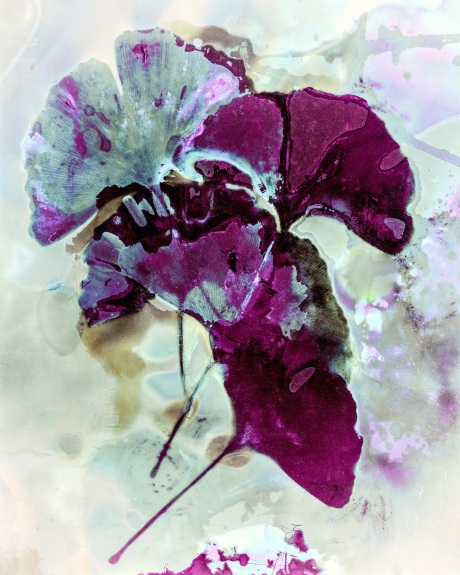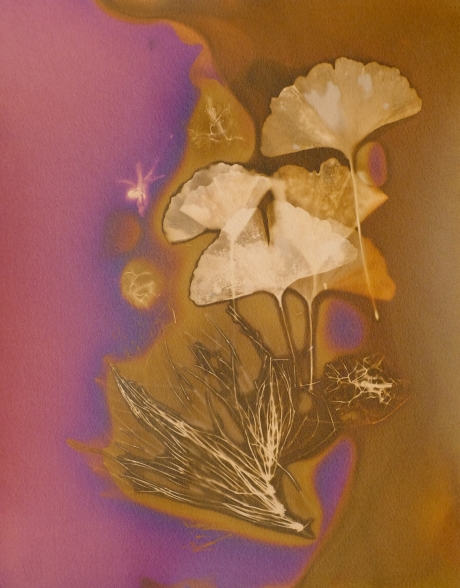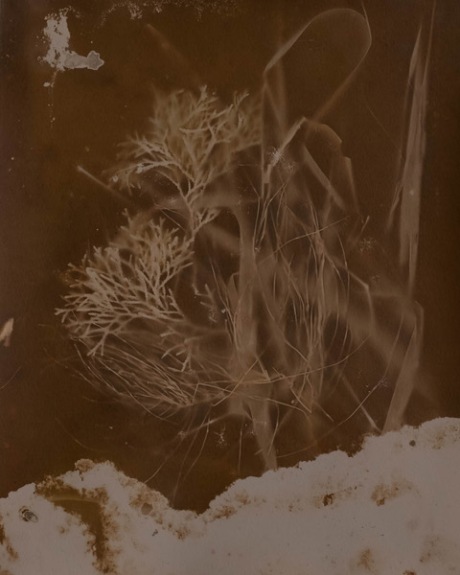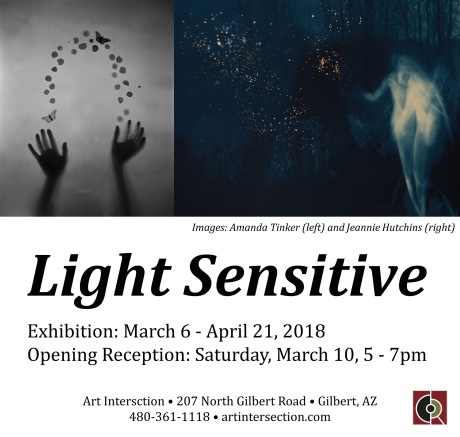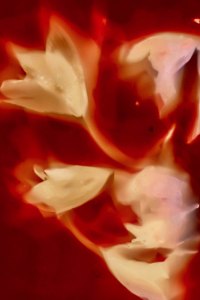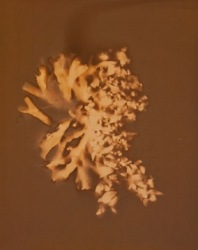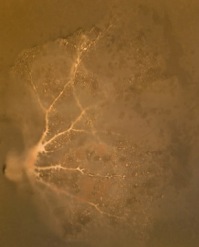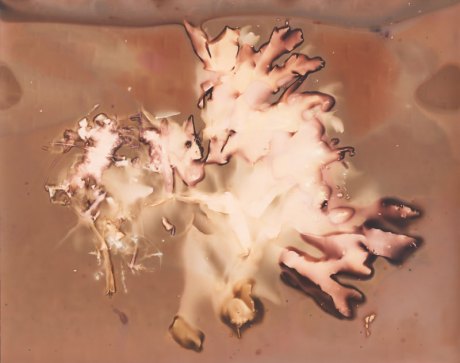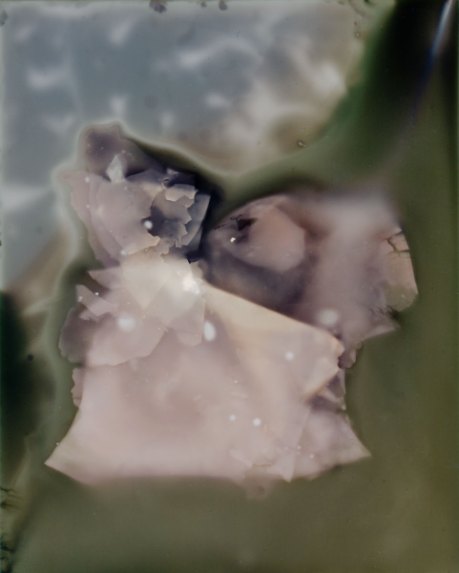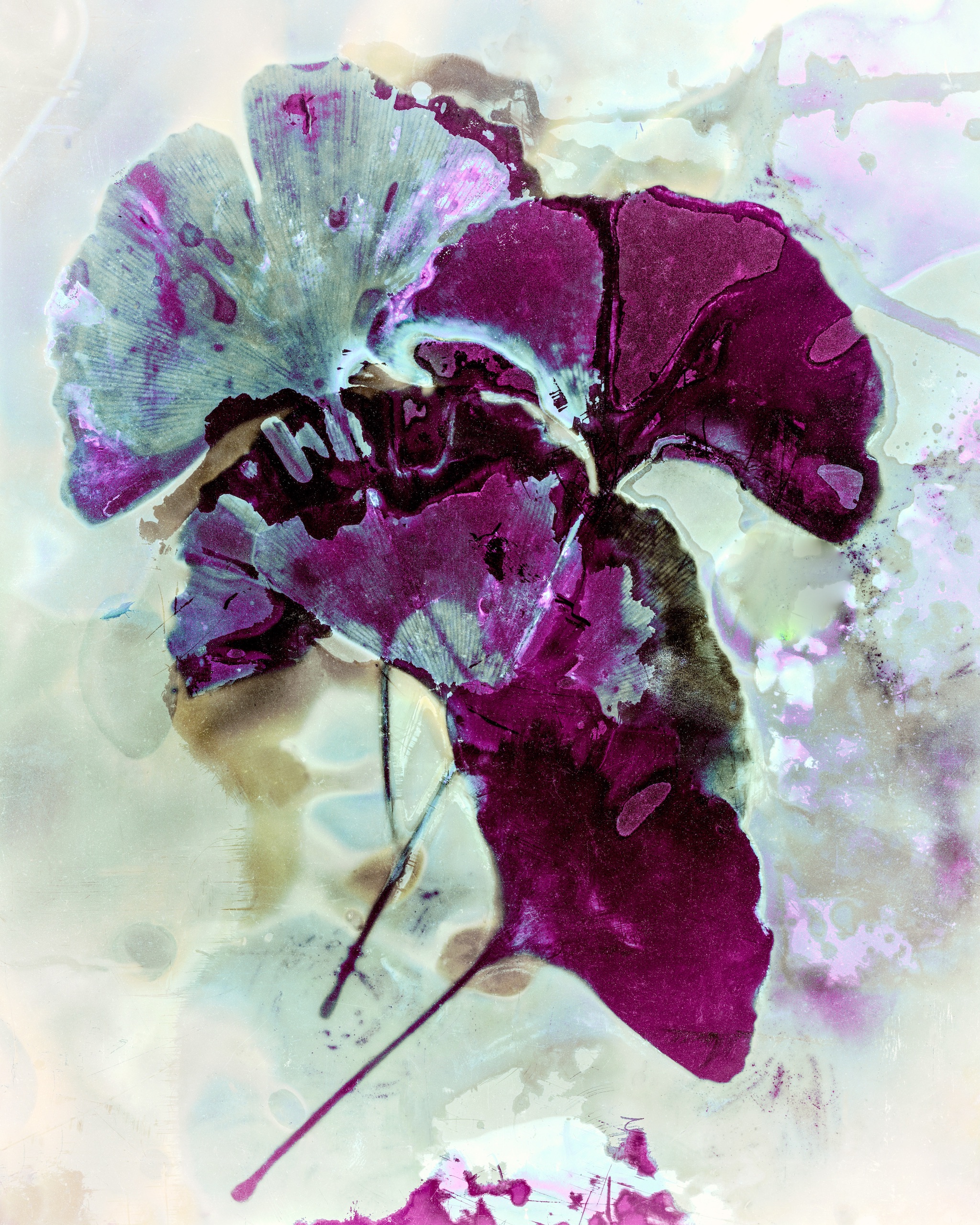In British Columbia, where vegetation is abundant, the symbolic meaning of plants’ life cycles is ceaselessly reflected in artworks. Lipoint Place (4211 Number 3 Road, Richmond), Formulation of Time is an exhibition that showcases the interpretation of this theme in the experimental photography of Phyllis Schwartz, Edward Peck, Desirée Patterson and Sand Wan.
Phyllis Schwartz and Edward Peck are artists whose practice contemplates the full cycle of natural growth, transitions and regeneration. They use plant-based materials to create photo-based works of art that speak to issues of permanence and impermanence. Their work has the capacity to engage viewers to contemplate ephemerality, change and transition in the ever-changing natural world. Phyllis Schwartz will exhibit plant-based Lumen Prints, and Edward Peck will exhibit high-resolution, plant-based, abstract Scanograms.
Desirée Patterson’s Point De Fusion series depicts natural landscapes and plants that appear to be melting into abstraction. With a high aesthetic value, the series aims to connect viewers by evoking a sense of awe and wonder, with a prophetic underlying current. The title, Point de Fusion, references the melting point of an object at atmospheric pressure; the moment when its physical state changes and it becomes a liquid. As the landscape begins to thaw, the idea of motion is implied in an image that once was still.
Sand Wan’s large-scale, black-and-white Immortality series emphasizes the seemingly tranquil but everchanging forests along the Pacific Northwest coast and Fraser River. With black-and-white photography, which lends timelessness and classic quality to his images, he captures the forests in their prime time and the trees’ last resting place along the coastline where they lie as driftwood.
Saturday April 6, 2019 2-4pm: Public Opening & Book Launch
Exhibition hours: April 6 – 30, 2019 Free admission
– Monday – Friday 10am-5pm, weekends by appointment.
– Also open during Art! Vancouver on the weekend of April 27 – 28, 10am-5pm.
– Closed on Good Friday April 19th.
Lumen Print Workshop by Phyllis Schwartz
Saturday, April 13th, 11am – 3pm (12-1pm beak for lunch)
Admission $15/person
Registration is required: https://lumenprints.eventbrite.ca
The workshop is participating in the 2019 Capture Photography Festival and supported by London Drugs Printing Grant.

